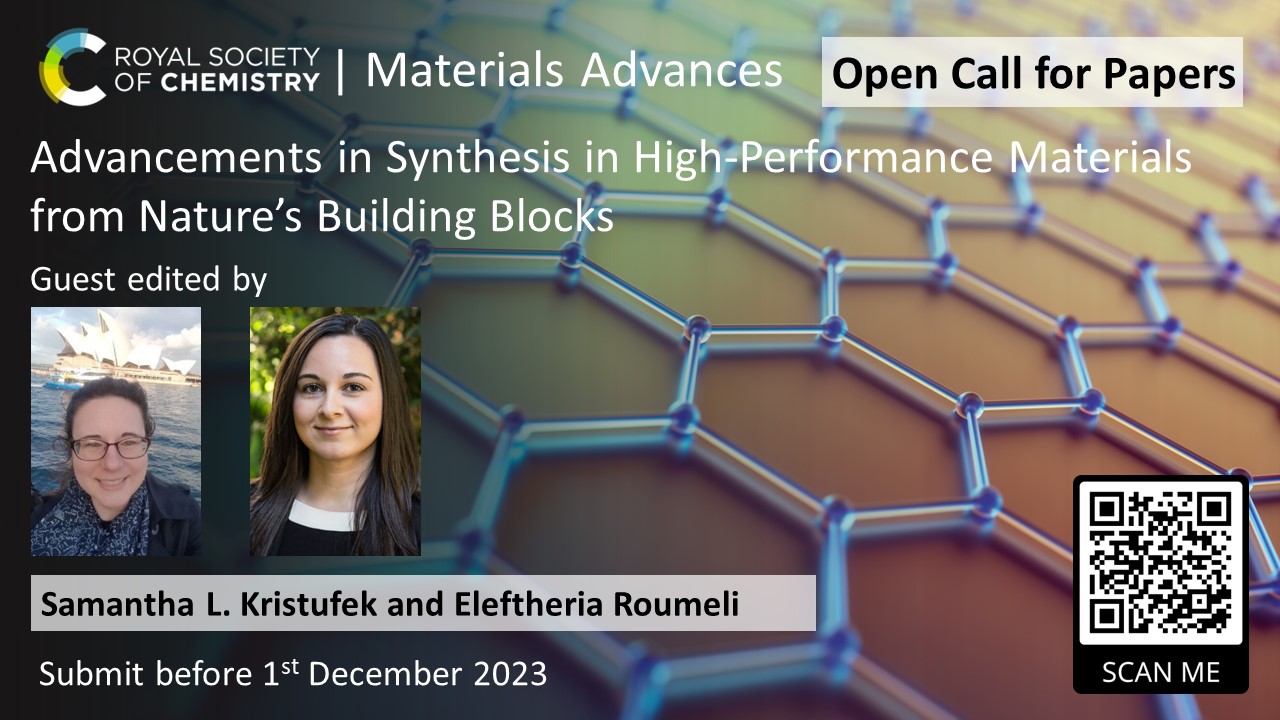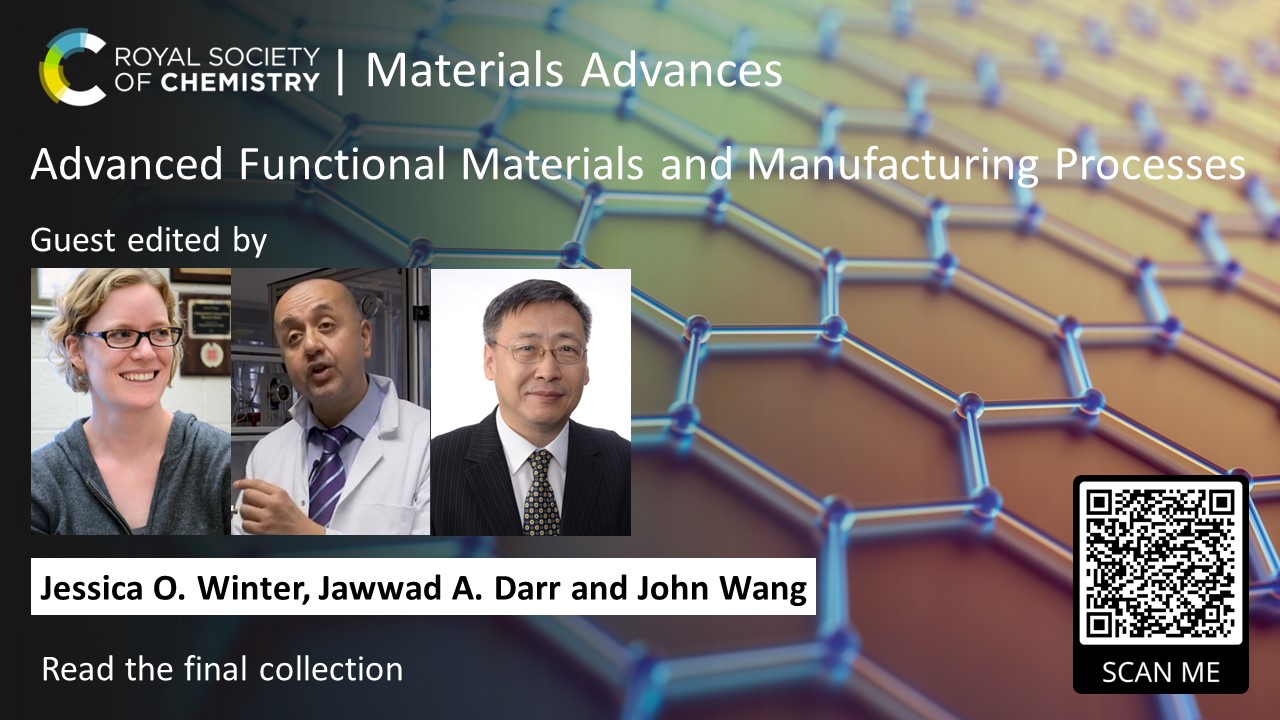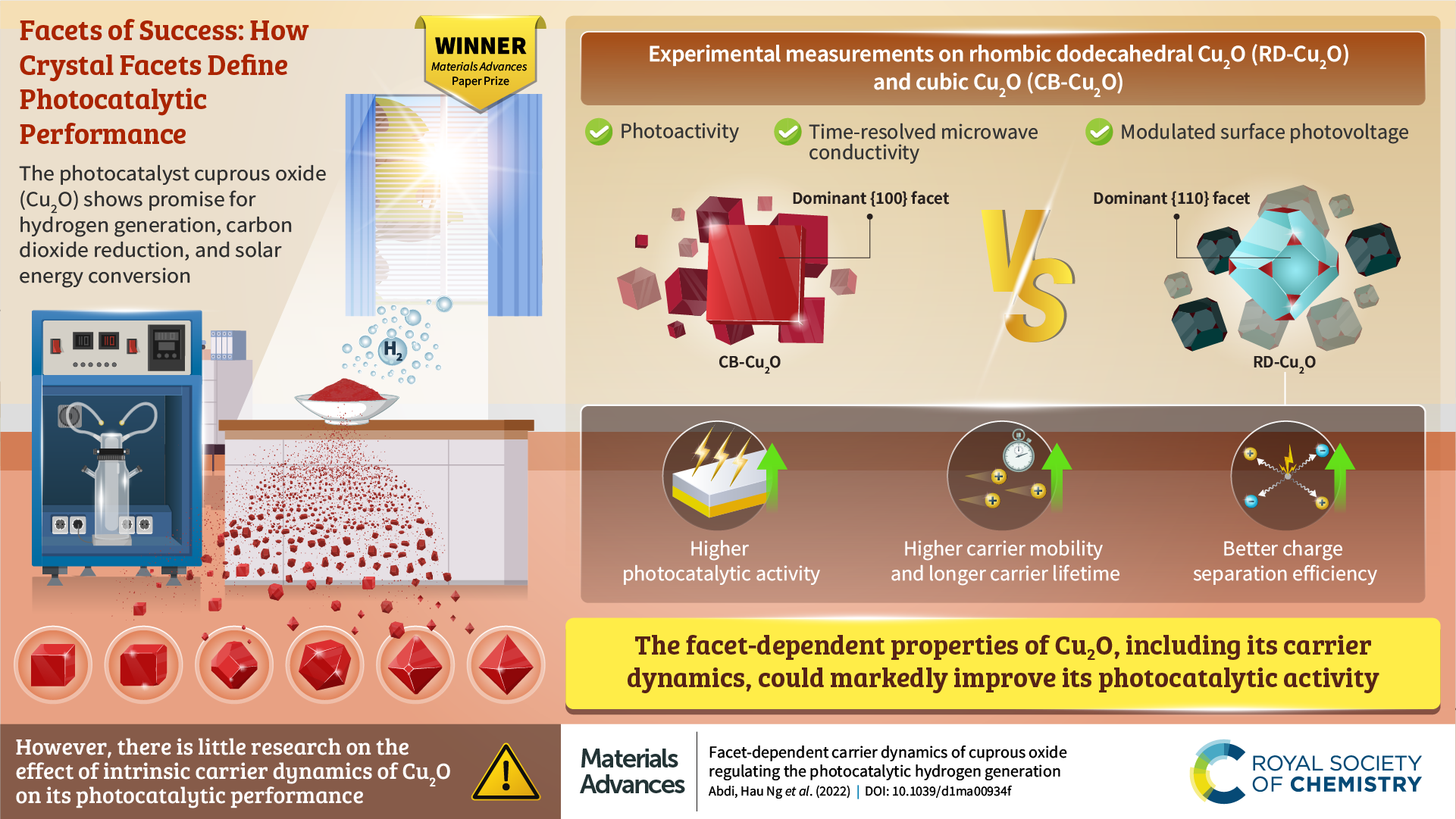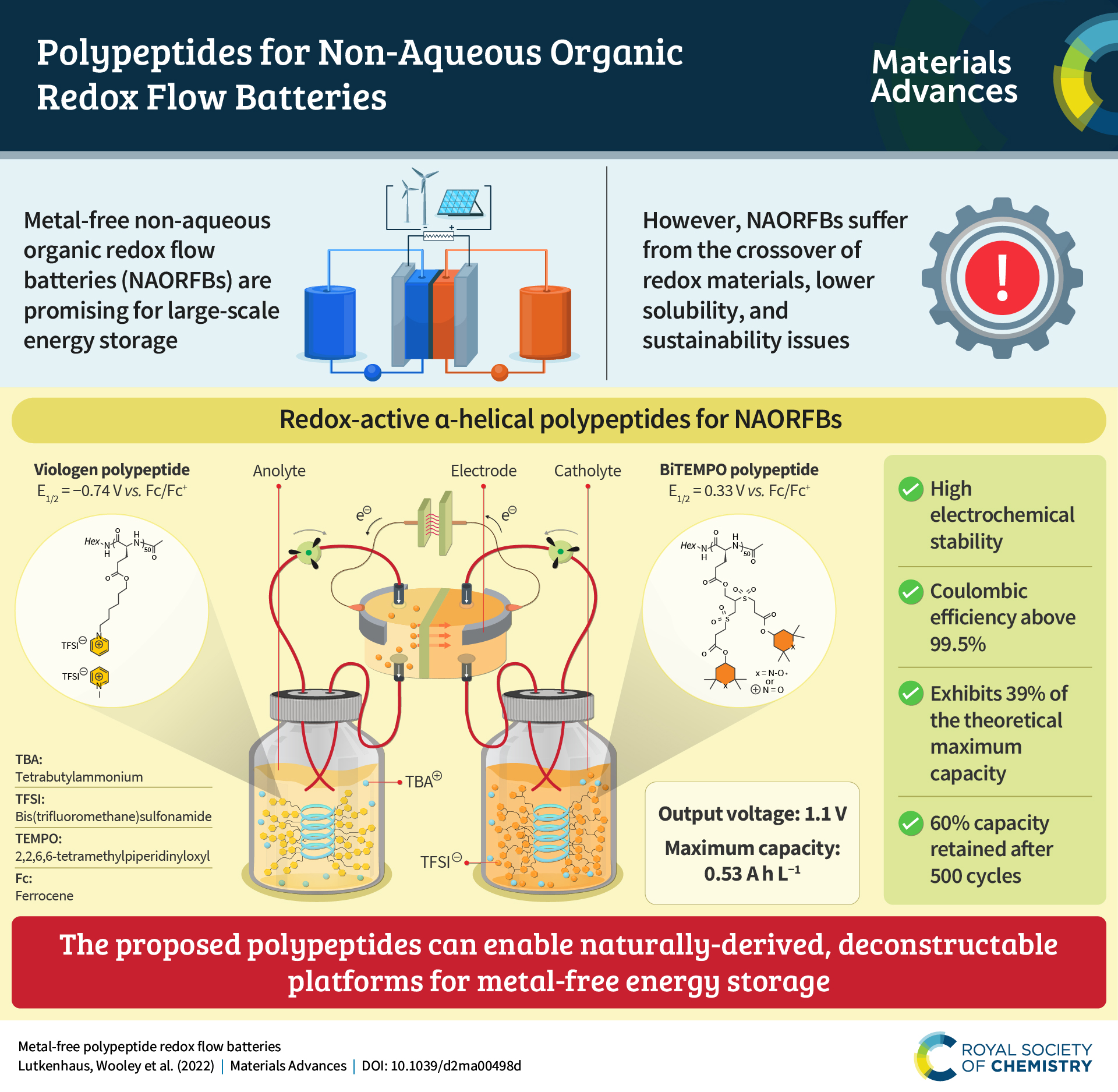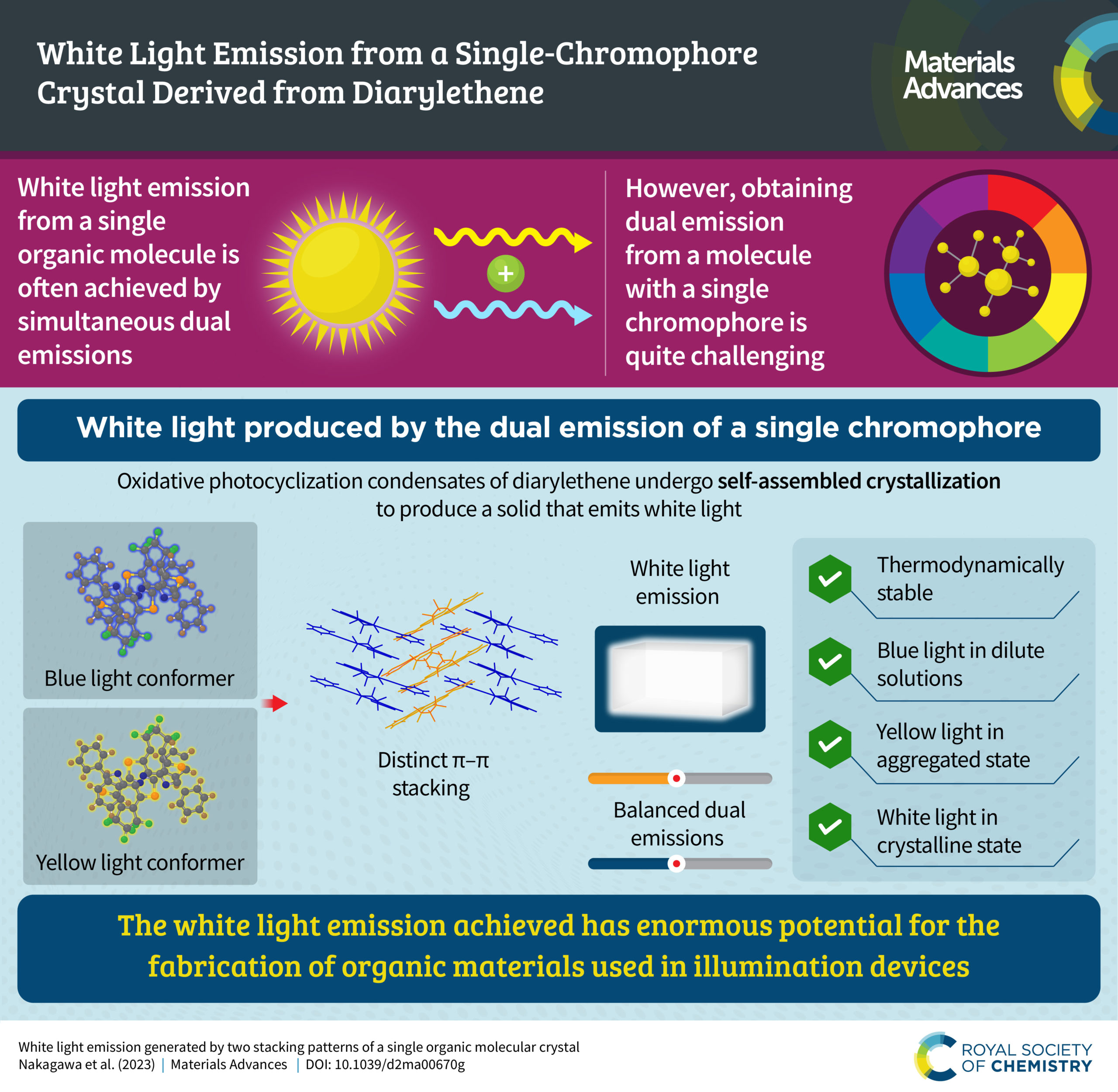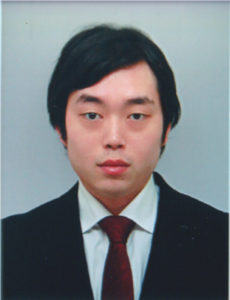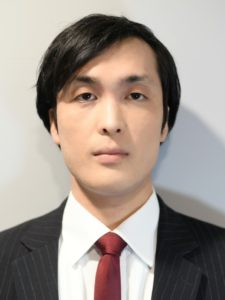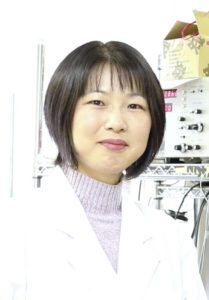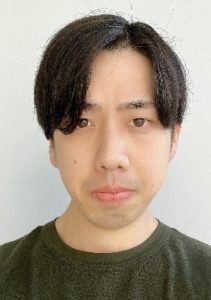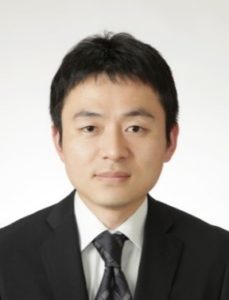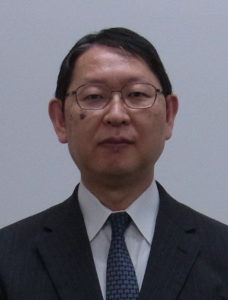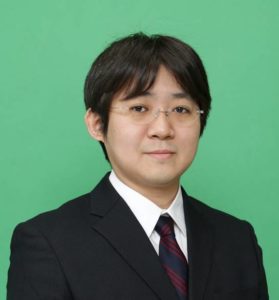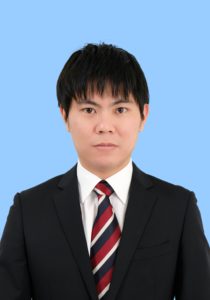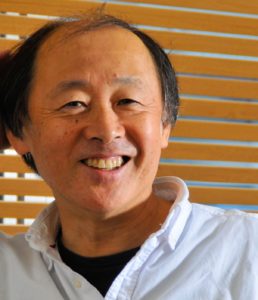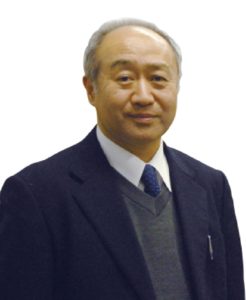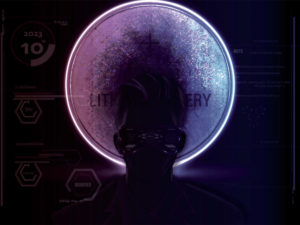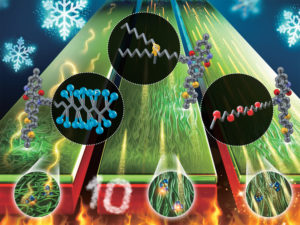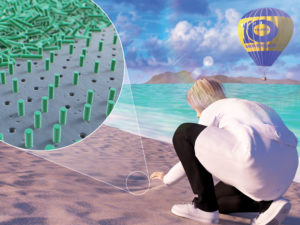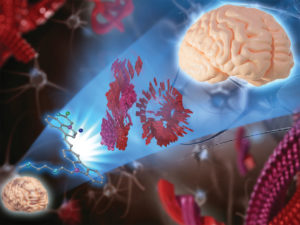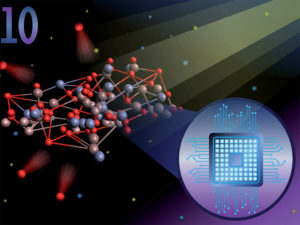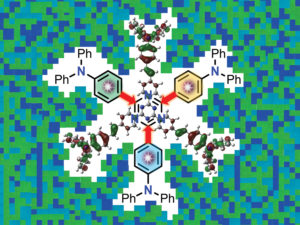This year we are pleased to celebrate 10 years since Journal of Materials Chemistry was split into three respective journals: Journal of Materials Chemistry A, B and C, each focusing on a different aspect of materials chemistry. We are grateful to our fantastic community of authors, reviewers, Board members and readers and wanted to showcase just some of them in a series of ‘Community Spotlight’ blog articles.
Next in our ‘Community Spotlight’ series, we feature some of our wonderful Editorial Board members who have supported Journal of Materials Chemistry A, B or C over the years through guiding the growth and development of the journal and/or actively handling papers in their Associate Editor roles. Check out their interview responses below to find out what they like about being on the Editorial Board and how they think the field of materials chemistry will develop in the next 10 years.
Professor Jessica Winter
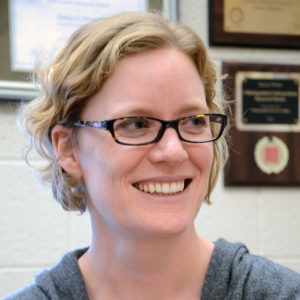 Jessica Winter is an Associate Editor for Journal of Materials Chemistry B. She is a Distinguished Professor of Engineering in the William G. Lowrie Department of Chemical and Biomolecular Engineering and the Department of Biomedical Engineering and Past Chair of the Chemical Engineering Technical Operating Council (CTOC) of the American Institute of Chemical Engineers (AIChE). She received her PhD in Chemical Engineering from the University of Texas at Austin in 2004, and completed a postdoctoral fellowship at the Center for Innovative Visual Rehabilitation at the Boston VA Hospital in 2006. Her research interests include nanoparticles for cancer imaging, diagnostics, and drug delivery; and cell migration in the brain tumor microenvironment. She is a co-founder and Chief Scientific Officer of Core Quantum Technologies, a company commercializing nanoparticle reagents for cancer diagnostics. She was named TechColumbus Innovator of the Year, Columbus Business First 40 under 40, and Columbus Business First 20 People to Know in Technology. She has received the American Physical Society (APS) Five Sigma Award, American Chemical Society (ACS) Rising Star Award and the Engineering DesignNews Golden Mouse Trap Rising Star Award; she was named to Top 25 STEM professors in Ohio; and is a fellow of the AIChE, BMES, AAAS, AIMBE, the RSC, and senior member of the IEEE. Jessica Winter is an Associate Editor for Journal of Materials Chemistry B. She is a Distinguished Professor of Engineering in the William G. Lowrie Department of Chemical and Biomolecular Engineering and the Department of Biomedical Engineering and Past Chair of the Chemical Engineering Technical Operating Council (CTOC) of the American Institute of Chemical Engineers (AIChE). She received her PhD in Chemical Engineering from the University of Texas at Austin in 2004, and completed a postdoctoral fellowship at the Center for Innovative Visual Rehabilitation at the Boston VA Hospital in 2006. Her research interests include nanoparticles for cancer imaging, diagnostics, and drug delivery; and cell migration in the brain tumor microenvironment. She is a co-founder and Chief Scientific Officer of Core Quantum Technologies, a company commercializing nanoparticle reagents for cancer diagnostics. She was named TechColumbus Innovator of the Year, Columbus Business First 40 under 40, and Columbus Business First 20 People to Know in Technology. She has received the American Physical Society (APS) Five Sigma Award, American Chemical Society (ACS) Rising Star Award and the Engineering DesignNews Golden Mouse Trap Rising Star Award; she was named to Top 25 STEM professors in Ohio; and is a fellow of the AIChE, BMES, AAAS, AIMBE, the RSC, and senior member of the IEEE. |
Where do you see the materials chemistry field in the next 10 years?
There has been a dramatic rise in a focus on sustainability in the last few years that will continue to grow. This includes syntheses derived from natural materials, syntheses that reduce energy use, and elimination of toxic solvents and catalysts. There is increasing interest in the materials life cycle. Can we make materials degradable, can we recycle materials, can we make them self-healing to improve their lifetime? I work in the nanotechnology field, and there is substantial interest in ecotoxicology. How do these materials affect plant and animal ecosystems that they might enter through run-off or waste disposal. How do these materials modulate gut and soil microbiomes? It is an exciting time to be working in materials chemistry as we think about how to realize new materials while minimizing their environmental impacts.
As an Associate Editor, do you have any top tips for authors preparing their manuscript?
The most important thing for authors to convey is the novelty of their work. Authors know their research better than anyone. Try to summarize the key findings and the impact of the work and include this in the cover letter, abstract, and conclusions. When possible, try to compare work to the current state of the art to provide context for the innovation.
Professor Achalkumar Ammathnadu Sudhakar

Achalkumar Ammathnadu Sudhakar is an Associate Editor for Journal of Materials Chemistry C. He is working as a full professor at the Department of Chemistry, IIT Guwahati from 2019, where he leads the Soft Matter Research Group. He is also associated with the Centre for Sustainable Polymers at IIT Guwahati. He received his PhD from Centre for Nano and Soft Matter Sciences (CeNS) Bengaluru. He worked as a Postdoctoral Researcher at the Centre for Molecular Nano Sciences, University of Leeds, UK (2007 to 2009) and at RIKEN Advanced Science Institute, Wakoshi, Japan (2009 to 2011), before joining IIT Guwahati. He has been the recipient of Indian Liquid Crystal Society Silver Medal 2019, CRS Silver medal 2023 for his research achievements. He has also been inducted as a Fellow of Royal Society of Chemistry (FRSC) and Indian Chemical Society (FICS) in 2023.
His research interests fall in the broad area of liquid crystals, supramolecular chemistry, green chemistry, functional polymers, organogels and self-assembled organic semiconductors. He has published around 90 papers and 3 patents. He has several invited articles and hot articles to his credit. He is also serving as a Dean of Outreach Education Program at IIT Guwahati to popularise science and maths among school children. He is the life member of Indian Liquid Crystal Society, Chemical Research Society and Society for Polymer Science in India. |
What do you think of Journal of Materials Chemistry C as a place to publish impactful materials chemistry research?
My independent research career was started by publishing my first paper in Journal of Materials Chemistry C, which at that time gave a platform to showcase my research. From last 10 years, I am witnessing the continuous rise of the journal, which has become the best in business for material chemists.
Where do you see the materials chemistry field in the next 10 years?
Sky is the limit ! – Materials Chemistry is such a vibrant and creative field, where you will see the molecule to do function. Utilization of experience, intuition, limitations, usefulness, practicality, creativity, curiosity, serendipity and now artificial intelligence – all these make the journey itself so adventurous and rewarding to the mankind, if the goal is reached, then it will be an icing on cake.
Professor Zhen Zhou
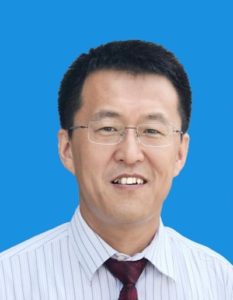
Zhen Zhou is an Associate Editor for Journal of Materials Chemistry A. He earned both his B.S. (in Applied Chemistry in 1994) and Ph.D. (in Inorganic Chemistry in 1999) degrees from Nankai University, China. He joined the faculty at Nankai University as a lecturer in 1999. Two years later, he began to work as a postdoctoral fellow in Nagoya University, Japan. In 2005, he returned to Nankai University as an associate professor and became a full professor in 2011. In 2021, he moved to Zhengzhou University, China as a Distinguished Professor, and he is now Dean of the School of Chemical Engineering. His main research interest lies in the integration of high-throughput computations, experiments and machine learning for energy storage and conversion. |
What do you think of Journal of Materials Chemistry A as a place to publish impactful materials chemistry research?
Journal of Materials Chemistry A is a prestigious journal that publishes high quality studies across all fields of materials chemistry, with a focus on applications in energy and sustainability. I think that Journal of Materials Chemistry A is a great place to publish your impactful materials chemistry research, as it provides a wide exposure, recognition, and dissemination of your work. Nevertheless, it is also very selective and competitive, so you need to ensure that your research is novel, significant, and well-written to have a chance of acceptance. Despite being a general journal of materials chemistry, Journal of Materials Chemistry A welcomes submissions on theoretical work, computational simulations, and machine learning, and considers them equally.
Where do you see the materials chemistry field in the next 10 years?
Materials chemistry is a dynamic and interdisciplinary field. In the next 10 years, I think that materials chemistry will continue to grow and evolve, driven by the challenges and opportunities faced by mankind. For example, addressing global issues such as hunger, health, energy, climate change, and pollution by developing new materials for renewable energy, clean water, food security, disease diagnosis and treatment, waste management, and green chemistry.
Materials chemistry will also contribute to the advancement of digital technologies and smart devices by creating new materials for data storage, communication, computation, sensing, and display. And it will embrace new paradigms and methods for materials discovery and design, such as artificial intelligence (AI), machine learning (ML), computational simulations, and high-throughput screening. These tools will help accelerate the innovation process and optimize the performance and functionality of materials.
Materials chemistry will also foster more collaboration and integration across disciplines and sectors, such as physics, biology, engineering, medicine, and industry. This will lead to the emergence of new fields and applications of materials chemistry, such as biointerfaces, biomimetics, nanomedicine, smart textiles, and wearable devices.
Materials chemistry is a fascinating and exciting field that has a lot of potential to make a positive difference in the world.
Professor Yana Vaynzof
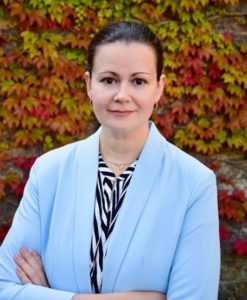
Prof. Dr. Yana Vaynzof is an Associate Editor for Journal of Materials Chemistry C. She is the Chair for Emerging Electronic Technologies at the Technical University of Dresden (Germany) and a Director at the Leibniz Institute for Solid State and Materials Research Dresden. She received a B.Sc. in Electrical Engineering from the Technion – Israel Institute of Technology (Israel) in 2006 and a M. Sc. In Electrical Engineering from Princeton University (USA) in 2008. In 2011, she received a Ph.D. in Physics from the University of Cambridge (UK). Yana was a postdoctoral research associate at the Cavendish Laboratory, University of Cambridge (UK) and an assistant professor at Heidelberg University (Germany) from 2014 to 2019. Yana Vaynzof is the recipient of a number of fellowships and awards, including the ERC Starting Grant, ERC Consolidator Grant, Gordon Wu Fellowship, Henry Kressel Fellowship, Fulbright-Cottrell Award and the Walter Kalkhof-Rose Memorial Prize. Her research interests lie in the field of emerging photovoltaics focusing on the study of material and device physics of organic, quantum dot and perovskite solar cells. |
What do you like most about being on the Editorial Board for Journal of Materials Chemistry C?
One of the things I like most is the opportunity to stay connected to excellent science in topics that do not directly fall into my own research activities. It allows me to see where the field of materials chemistry is evolving and how adjacent fields are developing.
Where do you see the materials chemistry field in the next 10 years?
Progress in materials chemistry is instrumental to tackling global challenges such as climate change. I believe that in the next decade the focus of the materials chemistry field will shift more and more towards the holistic inclusion of sustainability considerations into the design, synthesis, processing and end-of-life of materials. These could range from the development of new concepts in green chemistry to new approaches to materials reuse and recycling and much more.
As an Associate Editor, do you have any top tips for authors preparing their manuscript?
My top recommendation to authors preparing their manuscript for submission to JMC C is to read articles already published in the journal in order to gain better insights into its scope, impact and style. This will also help you realise how to present your findings in a scholarly way, how to make good and informative figures as well as correctly choose the title for your manuscript.
Professor Claus Feldmann

Claus Feldmann is an Editorial Board member of Journal of Materials Chemistry B. He studied chemistry (University of Bonn) and did his doctorate in solid-state chemistry under Martin Jansen. After post-doctoral studies with Hans-Georg von Schnering (Max Planck Institute of Solid-State Research, Stuttgart), he moved to industry (Philips Research Laboratories, Aachen/Eindhoven), where he was engaged in luminescent materials. Simultaneously, he habilitated at the RWTH Aachen on nanomaterials. In 2003, he was appointed at the University of Karlsruhe, the present Karlsruhe Institute of Technology (KIT). His research interests address solid-state chemistry and functional nanomaterials, ranging from ionic-liquid-based syntheses via base-metal nanoparticles and hollow nanospheres to nanocarriers for multimodal imaging and drug delivery. |
What do you like most about being on the Editorial Board for Journal of Materials Chemistry B?
As a member of the Editorial Board for Journal of Materials Chemistry B, I am fascinated by the variety of publications in the interdisciplinary area between materials and biomedical properties. It is incredible how precisely materials and material properties can be tuned today (compared to 10 years ago) and yet the complexity of human action is still orders of magnitude less than what nature has produced in biology. For me as a scientist, there is still so much to be learned.
Could you provide a brief summary of your most recent Journal of Materials Chemistry B publication?
In oncology, nanocarriers can be expected to make significant progress in achieving high efficacy at the tumour site with low side effects, avoiding drug resistance, and targeting metastases early in addition to the primary tumour. Suitable nanocarriers should contain a drug load as high as possible. They should be biodegradable and – similar to current therapy schemes with dissolved drugs – a cocktail of chemotherapeutics should be applied also with nanocarriers. To this concern, we have developed the concept of inorganic-organic hybrid nanoparticles (IOH-NPs) together with partners in biology and medicine. IOH-NPs are predominately characterized by a synthesis in water, an uncomplex composition and an unprecedented drug load. In this regard, we recently presented theranostic IOH-NPs with a cocktail of chemotherapeutic and cytostatic drugs and a drug load of 71-82 % of the total nanocarrier mass. Cell tests with different tumour cell lines, spheroids and 3D cell cultures prove efficient drug release, high efficacy and a strong synergistic effect of the drug cocktail.
(M. Khorenko, A. Meschkov, J. Napp, J. Pfeifer, J. Stier, F. Alves, U. Schepers, C. Feldmann, J. Mater. Chem. B 2023, 11, 3635-3649)
Thank you to all of our dedicated Editorial Board members for their support of the Journal of Materials Chemistry family of journals over the years.
We hope you enjoyed finding out more about some of our Editorial Board members. Keep an eye out for our next ‘Community Spotlight’!
If you missed any of our previous ‘Community Spotlight’ blog posts, check them all out here.
Comments Off on Journal of Materials Chemistry A, B and C 10th Anniversary Community Spotlight: Editorial Board












